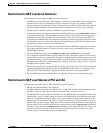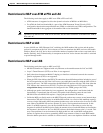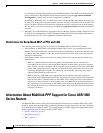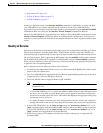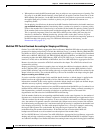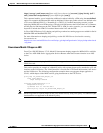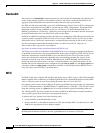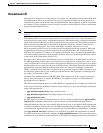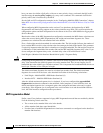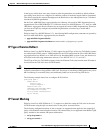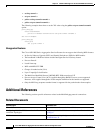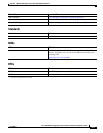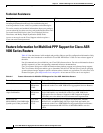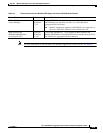
8-13
Cisco ASR 1000 Series Aggregation Services Routers Software Configuration Guide
OL-16506-17
Chapter 8 Multilink PPP Support for the Cisco ASR 1000 Series Routers
Information About Multilink PPP Support for Cisco ASR 1000 Series Routers
Downstream LFI
Although LFI is thought of as a single feature, it is actually two independent features within MLP. MLP
link fragmentation allows larger packets to be Layer 2 fragmented by MLP, and the fragments to be
distributed across the various member links in the MLP bundle. These fragments are MLP encapsulated
and sequenced. These fragments are then collected, reordered, and reassembled at the peer termination
point for the MLP bundle interface.
Note For more information about interleaving with QoS, see ?$paranum>Quality of Service? section on
page 8-9.
Interleaving enables you to reduce transmission delay on delay-sensitive voice, video, and interactive
application data by interleaving it with the MLP fragments. When interleaving is configured, the packets
on the bundle interface that QoS classifies as priority packets are interleaved. These priority packets are
PPP encapsulated and interleaved with the MLP-encapsulated fragments or packets. When the peer
router receives the PPP packets, they can be immediately forwarded, whereas, the received
MLP-encapsulated packets have to be reordered and reassembled before being forwarded. While link
fragmentation and interleaving can be configured on any multilink bundle, this LFI functionality is
beneficial only on bundles of 1 Mbps or less. Packet transmission delays of higher bandwidth bundles
are such that QoS prioritization of priority traffic should be sufficient to guarantee preferential treatment
of the priority traffic without the need for LFI.
One downside of interleaving is that when there are two or more links in an MLP bundle, the order of
the PPP-encapsulated packets cannot be guaranteed. In most applications sending data, such as, voice,
video, and Telnet, this is not an issue because the gap between the packets on a given flow is large enough
that the packets must not pass each other on the multiple links in the bundle. Since the order cannot be
guaranteed for the priority PPP-encapsulated packets that are interleaved, IP Header Compression
(IPHC) is skipped on any packet that is classified as priority-interleaved packet. IPHC continues to occur
for nonpriority packets that are sent as MLP encapsulated because MLP guarantees reordering before
the packets are forwarded to IPHC.
The Multi-Class Multilink Protocol (MCMP) (RFC-2686) addresses the issues related to ordering of
priority-interleaved packets. Currently, the MCMP is not supported on the Cisco ASR 1000 Series
Aggregation Services Routers.
MLP LFI must be configured on the Cisco ASR 1000 Series Aggregation Services Routers to enable LFI.
In the context of interface multilink or interface virtual template, use any of the following commands to
enable link fragmentation:
• ppp multilink fragment delay (delay in milliseconds)
• ppp multilink fragment size (maximum fragment size, in bytes)
• ppp multilink interleave
For MLP using serial links, link fragmentation can also be enabled by configuring the ppp multilink
fragment size (maximum fragment size, in bytes) command on the member-link serial interface.
If the MLP bundle has only one active member link and interleaving is not enabled, MLP fragmentation
is disabled. In addition, all the packets are sent PPP encapsulated instead of MLP encapsulated. When a
second link in the bundle becomes active or interleaving is enabled, MLP and fragmentation is enabled.
If the ppp multilink interleave command is not configured, only MLP link fragmentation is enabled.
To enable interleaving, you must also configure the ppp multilink interleave command at the interface
multilink level or the interface virtual template level. In addition to configuring interleaving as indicated



